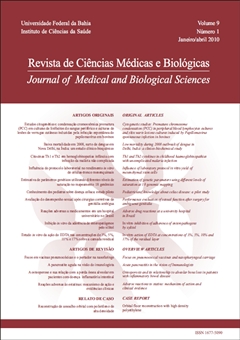The importance of magnetic resonance image in studies about interactive processes of organs and systems
DOI:
https://doi.org/10.9771/cmbio.v9i1.4727Keywords:
Magnetic Resonance Imaging (MRI) – Diffusion Tensor Imaging (DTI) – Functional Magnetic Resonance Imaging (fMRI)Abstract
Magnetic resonance image (MRI) was developed in the 70’s and became a cornerstone for neuroscience. In MRI, the biological tissues are subjected to a magnetic field, which means that the hydrogen nuclei (protons) are targeted, vibrate on its axis, emit energy and generate images of various tissue types. The MRI technique is based on three steps: alignment, excitation and radiofrequency detection. The functional MRI is produced based on glycolysis peroxide. The technique of diffusion weighted imaging (DWI) exploits the differences of water diffusion properties and magnetic resonance of diffusion tensor imaging (DTI) enables in vivo study of fibrous tissue. These techniques have made possible the visualization of different physiological, biochemical, cellular and molecular processes to provide direct information about the interactive processes of organs and systems.Downloads
Download data is not yet available.
Downloads
Published
2010-11-18
How to Cite
Madureira, L. C. A., Oliveira, C. S., Seixas, C., Nardi, V. D., Araújo, R. P. C., & Alves, C. (2010). The importance of magnetic resonance image in studies about interactive processes of organs and systems. Journal of Medical and Biological Sciences, 9(1), 13–19. https://doi.org/10.9771/cmbio.v9i1.4727
Issue
Section
Review Articles
License
The Journal of Medical and Biological Sciences reserves all copyrights of published works, including translations, allowing, however, their subsequent reproduction as transcription, with proper citation of source, through the Creative Commons license. The periodical has free and free access.


